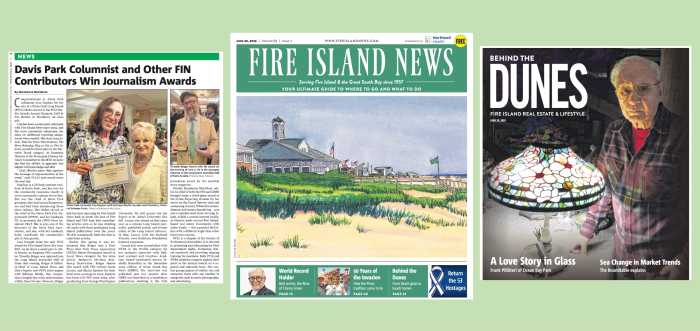
“The Gargoyle Hunters”
By John Freeman Gill
Fiction
Vintage Books $16.95
Fact, fiction, funny and sad, “The Gargoyle Hunters” is a story of a city kid growing up in a brownstone in 1974. This isn’t any city kid. This is born and bred New Yorker John Freeman Gill, award-winning and anthologized real estate and architectural writer who turns his impressive knowledge into a novel. Griffin Watts, his fictionalized 13 year-old self, is the narrator.
Gill gives us a city in financial crisis, subway trains so graffitied you can’t see out of the windows. Urban renewal is wiping out entire neighborhoods, while Griffin’s father, Nick Watts, with “more than a whiff of disrepute whatever he was up to,” tools around town in his repurposed Good Humor truck rescuing – his word for stealing – architectural artifacts from landmark buildings.
Charismatic, handsome and opinionated, Nick Watts is all heart when it comes to architecture. He loves his city, and will go to any lengths to preserve it. Even if it means sending his young son out on a crumbling ledge, or making him party to a theft of historic drawings.
Griffin understands these were not “reasonable things for a grown man to ask of a 13-year-old boy who wanted only to get close to him.” Yet small and nimble, able to shinny in and out of the innards of 19th century buildings and clamber up their facades, Griffin takes to his father’s late-night escapades like rust on iron. He will go to any lengths – say, dangling 50 stories off the ground from a frayed rope to pry loose a gargoyle from the Woolworth building – in order to spend time with his dad.
A father who makes off with antique artifacts, a distracted mother who makes art out of crushed eggshells, and a troubled sister – the Waltons they’re not. Yet Griffin is not a boy you’ll find sulking and feeling sorry for himself. He’s an engaging youngster who loves baseball, admires the “go-it-alone smart aleck Jim Rockford” from “The Rockford Files,” and is tempted and tortured by the thought of French kissing a girl.
There are scenes with Griffin’s mother who takes in misfit boarders to pay the rent on the brownstone. There’s a funny piece involving Griffin, a frozen Popsicle, a girl, a bottle of vermouth and an ear-piercing gone bad. But these encounters pale in comparison to the events that pass between father and son and their larcenous rescue missions.
The book belongs to buildings, to their physical history, to their creators and makers, to the stone masons and carvers and gilders, many who came from other countries and brought their artistry to make New York “a city where you could inhabit multiple eras simultaneously.” But the book also belongs to a young boy’s quest to find his father, and “whatever part of him was missing, would always be missing.” Their relationship, or lack of it, is a fitting parallel to the chipped, ruined and fragmented artifacts Nick Watts compulsively accumulates.
When caught in flagrante collecting – swiping the ornamental iron facade off a building in broad daylight no less – Mr. Watts hightails it and brazenly sells the booty to a scrap yard. He goes missing when he learns the police are after him for grand theft. Those panels he pinched are worth money, not only for their scrap value, but because they came off a historic building.
Closing chapters find Griffin in search of his father, the boy holed up in an abandoned factory on the New Jersey shore. A raging hurricane peels away the roof “section by section until there was nothing left up there but a dark striped cage … walls were shaking loose … the sound … a great twisting ache…” The storm imagery is vivid, and fitting, as young Griffin learns some grown up truths he is not prepared for. As for those truths, readers will get no spoilers from yours truly, but they will learn more than they ever thought there was to know about cast iron, terracotta and caryatids from author Gill, and they will learn it in an entertaining way.
John Freeman Gill has inherited his father’s passion for pediments – he is to the edifice born, and he bears his birthright well. But instead of rescuing artifacts, he writes lovingly about them. “… don’t be one of those blinkered goddamn New Yorkers who walk around town staring at their shoes … that they never see the city around them,” Watts counsels his son. So follow his lead; next time you’re in the city that never sleeps, wake up and look up! You never know what treasures you will find.
EDITOR’S NOTE: Author John Freeman Gill grew up spending his summers in Saltaire, where his family has kept a home for decades. He tells us he wrote much of this novel while spending time on Fire Island.




























